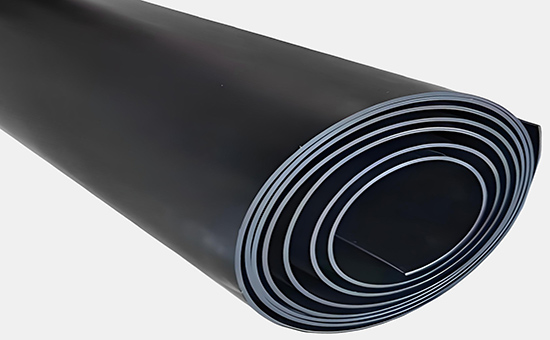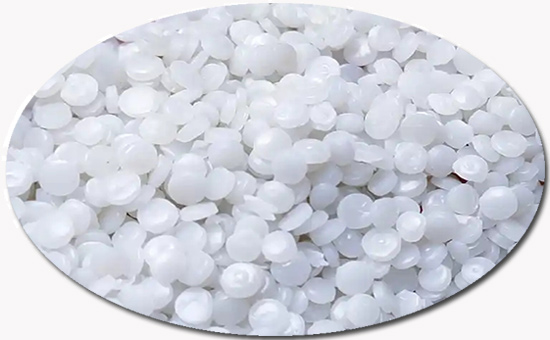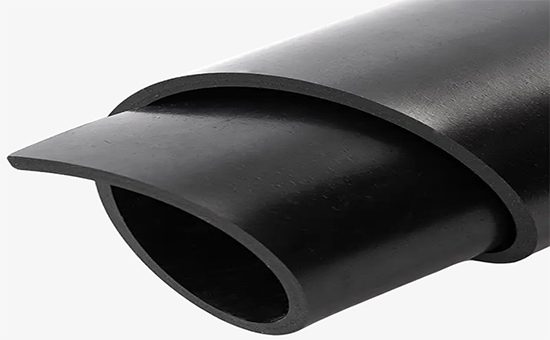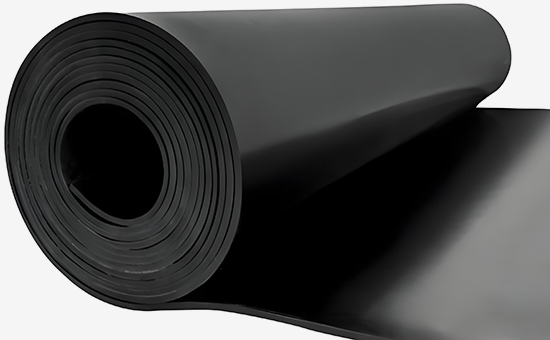Oil-resistant rubber board is a sheet industrial product processed with oil-resistant rubber as the main material, which can be used for a long time in oil media, and nitrile rubber is a commonly used raw material for oil-resistant rubber board. In actual production, the use of rubber and plastic and the replacement of nitrile rubber with materials can reduce the amount of raw rubber and reduce the cost; The appropriate use of nitrile recycled rubber can reduce the cost of raw materials more on the premise of ensuring the oil resistance of rubber and plastic oil-resistant rubber boards.
1. Application of nitrile recycled rubber in nitrile rubber/PVC oil-resistant rubber board
Polyvinyl chloride is a polymer made by the polymerization of vinyl chloride monomer by free radicals under the action of peroxides and azo compounds, or under the action of light and heat. When using nitrile rubber as the main raw material to produce oil-resistant rubber board, the use of nitrile rubber/PVC and the replacement of nitrile rubber with glue can reduce the cost of raw rubber. The appropriate use of nitrile recycled rubber can solve the process problem on the premise of ensuring the oil resistance of the glue board.

When mixing nitrile recycled rubber with nitrile rubber and PVC to prepare rubber-plastic oil-resistant rubber plates, sulfur vulcanization is mostly used, and the accelerator CZ and the accelerator TMTD are combined with sulfur, and the blended material has good coking safety, fast vulcanization speed, and good vulcanization flatness.
2. Application of nitrile recycled rubber in nitrile rubber/PE oil-resistant rubber board
After adding 10-30 parts of polyethylene to the oil-resistant rubber board with nitrile rubber as the main body, the hardness of the oil-resistant rubber board will increase, and 10 parts of low-density polyethylene need to add 3-5 parts of softener to ensure that the hardness does not change much; After adding low-density polyethylene E5LYY422, the self-adhesive of the adhesive is poor, and it is easy to de-roll during mixing, so it is necessary to add tackifiers, such as rosin, phenolic resin, coumalon resin, etc. Mixing nitrile recycled rubber in nitrile rubber/PE plate in an appropriate amount can adjust the processing process performance of the rubber and reduce the cost of raw rubber.

When mixing nitrile recycled rubber with nitrile rubber and PE to prepare rubber-plastic oil-resistant rubber board, sulfur and peroxide can be used as a vulcanization system, and an appropriate amount of silane coupling agent can be added when oxide is used as a crosslinking agent. The appropriate use of tackifiers such as rosin, phenolic resin, and coumarone resin can further improve the problem of poor self-adhesion of blended compounds.
3. Application of nitrile recycled rubber in neoprene/PVC, neoprene/CPE oil-resistant adhesive board

Neoprene is made of chloroprene through emulsion polymerization, which has excellent oil resistance, weather resistance, ozone resistance and flame retardancy, and can be used to produce oil-resistant adhesive boards. In actual production, the cost of oil-resistant rubber-plastic plates produced by neoprene/polyvinyl chloride and neoprene/chlorinated polyethylene is lower than that of nitrile rubber-plastic oil-resistant rubber plates. An appropriate amount of nitrile recycled rubber is added in the production of neoprene rubber rubber and plastic oil-resistant rubber plates, which can further improve the oil resistance of rubber plates and reduce the cost of raw materials.
4. Nitrile rubber/PVC/nitrile recycled rubber is used to produce the vulcanization formula of rubber and plastic oil-resistant rubber plate
Nitrile rubber 45 parts, PVC 15 parts, nitrile recycled rubber 40 parts, zinc oxide 3.2 parts, stearic acid 0.8 parts, anti-aging agent BLE 1 copy, carbon black N774 62 parts, light calcium carbonate 38 parts, heavy calcium carbonate 15 parts, dibutyl phthalate 10 parts, pine tar 4 parts, accelerator CZ 0.65 parts, accelerator TMTD 0.15 parts, sulfur 1.2 parts; A total of 236 copies.

Hongyun 75% oil-resistant nitrile recycled rubber selects waste nitrile gloves as the main raw material, which is crushed, desulfurized, filtered and refined, with large oil resistance coefficient, good hand elasticity, high fineness, no impurities, no taste, high plasticity, wear resistance, aging resistance and other performance characteristics, which can be used alone or in combination with nitrile original rubber to produce high-standard oil-resistant rubber plates, and the average cost reduction range is about 30% after being used by hundreds of enterprises.
Exclusive original article [commercial authorization] reprint, excerpt and excerpt in any form are prohibited without written authorization. Focus on Hongyun rubber: learn the process formula and raw material technology of producing rubber products from recycled rubber to help you reduce costs and increase profits